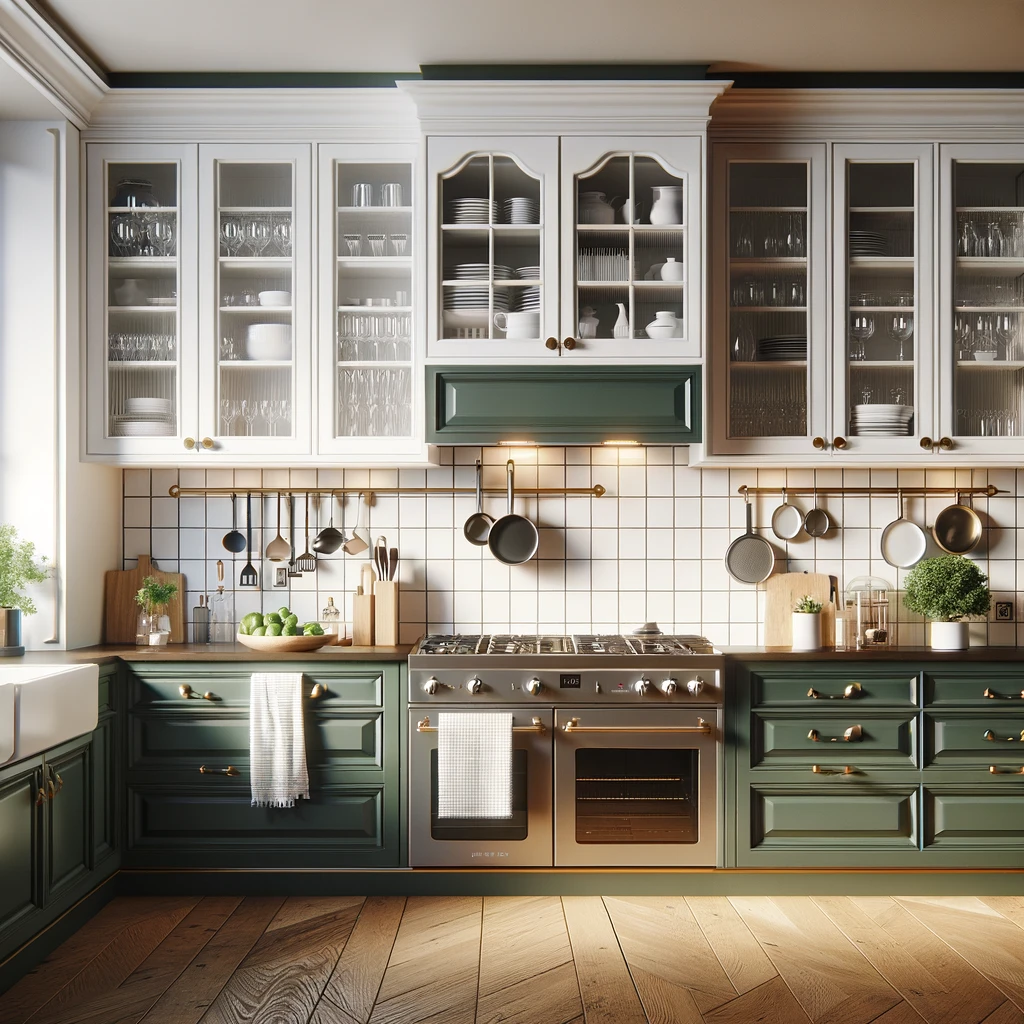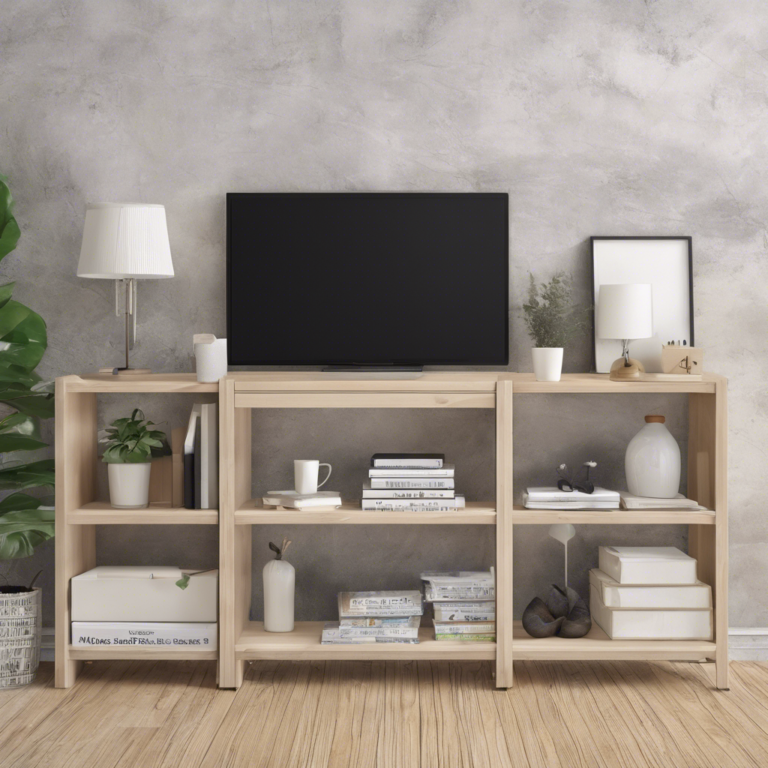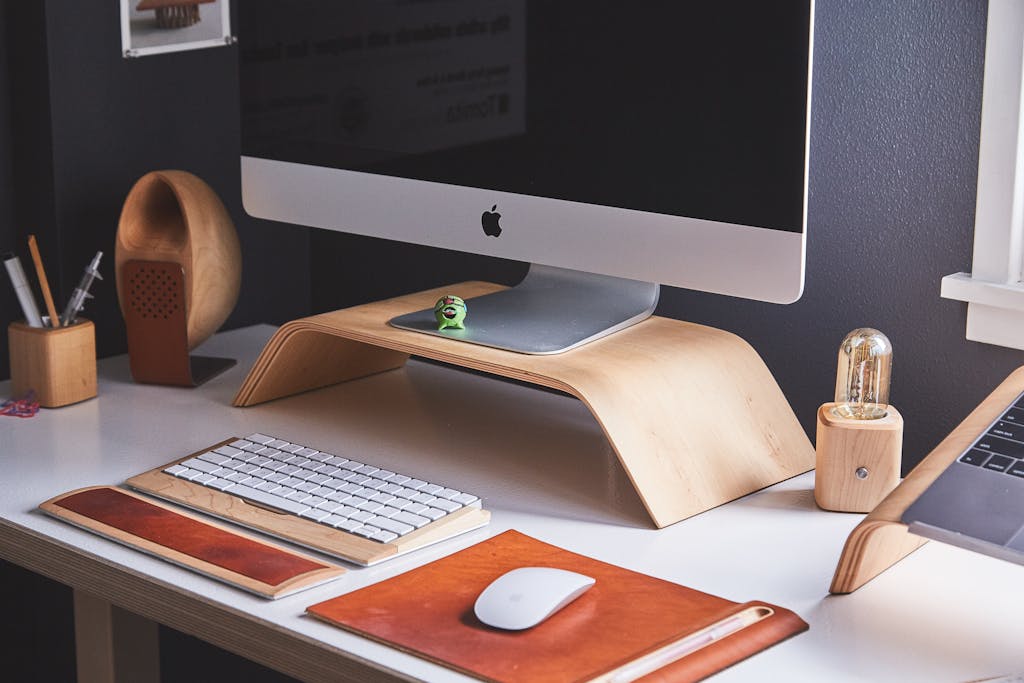Your kitchen, irrespective of its size, is the heart of your home. It’s where the magic of meal preparation happens. However, small kitchens can quickly turn into cluttered nightmares without having right categories, easy storage solutions and the right organization techniques. With the right tips and tricks, you can transform your tiny kitchen into a highly efficient space. Let’s get started by understanding the art of decluttering!
Art of Decluttering for a Small Kitchen
Decluttering is an essential first step in organizing any space, especially a small kitchen. It might seem overwhelming at first, but it’s a necessary step. Here is how you can approach it:
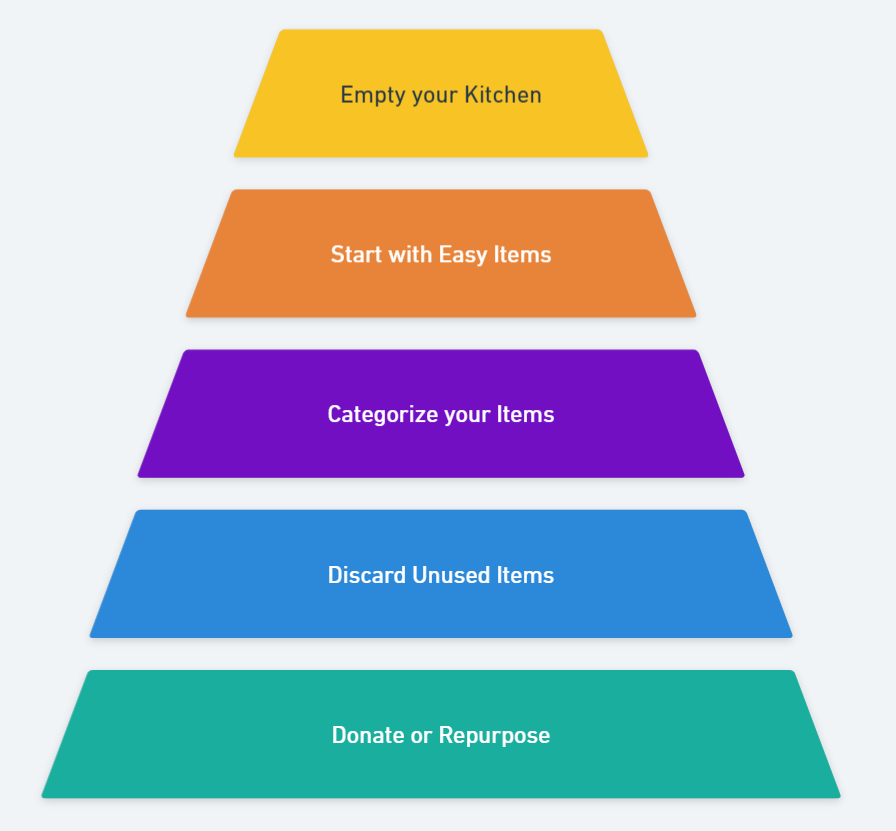
1. Empty your Kitchen: The First Step to Clarity
Yes, this step seems very dauting but start by removing all the items from your kitchen cabinets, drawers and pantry. Spread them out on the counter to evaluate what you have. This process helps you identify the amount of items you have, items that are hidden out of sight, duplicate items, low-quality items, and objects that don’t belong in the kitchen.
2. Start with the Easy Items: Simplifying the Process
Begin the decluttering process with items that are simple to sort through. Its easier to sort through 7 of the same plastic containers than decluttering a old coffee maker that was given to you by your loved ones. Sentimental items can be emotionally taxing to deal with, so it’s best to save them for later.
3. Categorize your Items: Key to Organized Success
Once you’ve decluttered through the easy items, start categorizing the remaining items. This system will help you visualize the necessary categories, the volume of each category, hence making it easier to devise suitable storage solutions.
Tip: Before diving into the excitement of buying new storage solutions, take a moment to declutter and categorize your belongings. It’s easy to get carried away with the idea of organizing, but understanding what and how much you actually need to store items will save you from unnecessary purchases. Make sure the storage options you’re considering truly fit your space and needs.
4. Discard Unused Items: Making Tough Choices
If an item has not been used for over 8-12 months, it’s time to part ways. It’s safe to assume that you won’t be needing it in the immediate future.
5. Donate or Repurpose: Giving Items a New Life
Items that you no longer need but are still in good condition can be donated or repurposed elsewhere in your space. For example, consider using old pots and pans as planters.
Learn more on different decluttering techniques here.
Essential Principles for a Functional Kitchen
1. Quality over Quantity: Investing in Durability
Invest in high-quality cookware. While it might be a significant one-time investment, good-quality cookware like stainless steel over non-stick pots and pans poses no health hazards and will last you a long time. It might be difficult to let go of some of your items, but it’s a necessary step towards achieving an organized kitchen that works for you and your family.
2. Reuse and Recycle: Sustainable Practices at Home
Plastic containers that have outlived their usefulness in the kitchen don’t have to be discarded. Instead, they can be repurposed for various storage needs around your home. For instance, these containers can be perfect for organizing and storing household items such as sponges, scrubbing brushes, and washing powder. This approach not only helps in reducing waste but also provides a cost-effective solution for organizing your home essentials. By finding new uses for these containers, you contribute to a more sustainable lifestyle while keeping your living space tidy and organized.
Practical Tips for Small Kitchen Organization
Now that you’ve decluttered your kitchen, it’s time to dive into organizing. Here are some practical tips to help you:
1. Shelf Organizers and Cabinet Racks
To maximize space in kitchens that lack shelves, shelf organizers and cabinet racks are ideal. They provide:
- Multi-level storage: This allows you to stack pots and pans at different heights.
- Improved visibility: Easily see and grab the lid or pot you need without unstacking everything.
- Space efficiency: By using vertical space, you can store more in the same footprint.
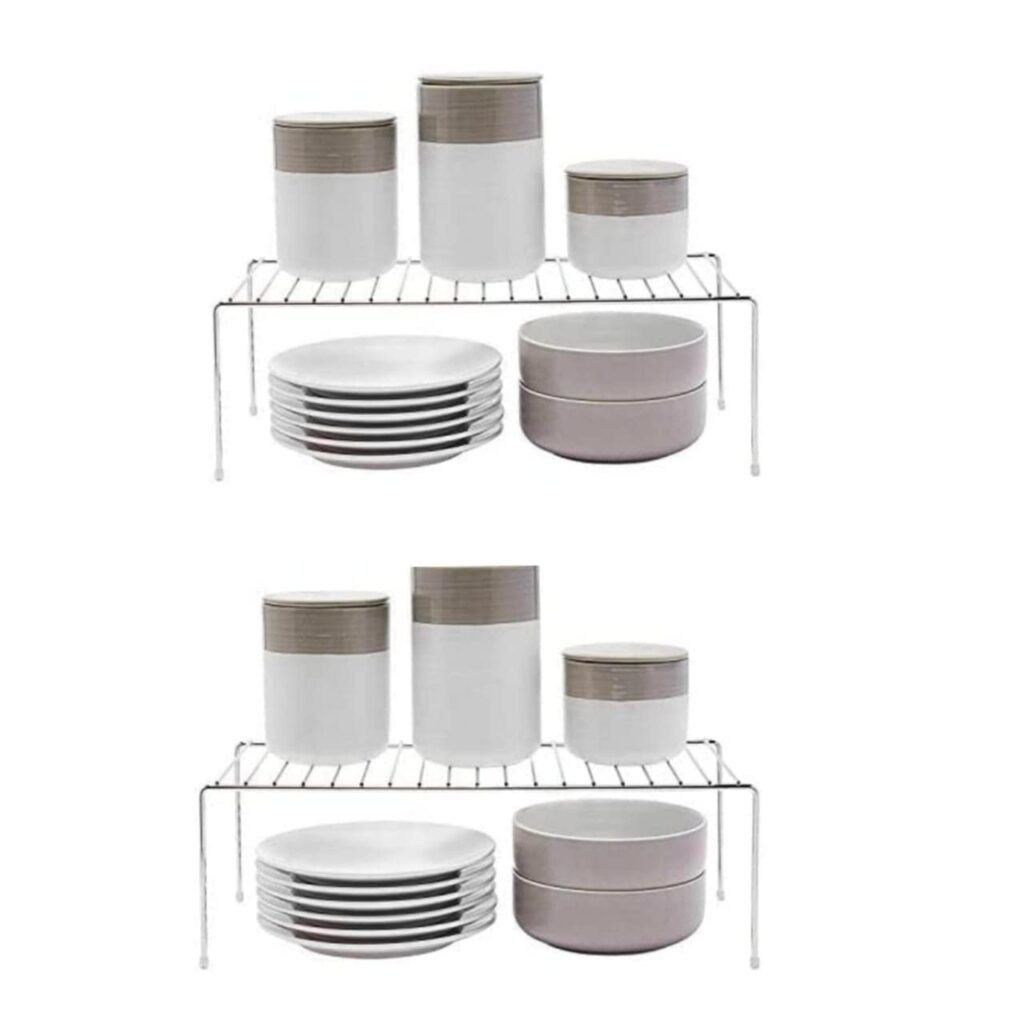

2. Bins for Produce
Bins help to keep unrefrigerated produce organized:
- Separation: Use bins to separate different types of produce.
- Aesthetics: A standalone bin stand can enhance the visual appeal of your kitchen.
- Accessibility: Keeping produce in bins within drawers or on stands makes it easy to find what you need.
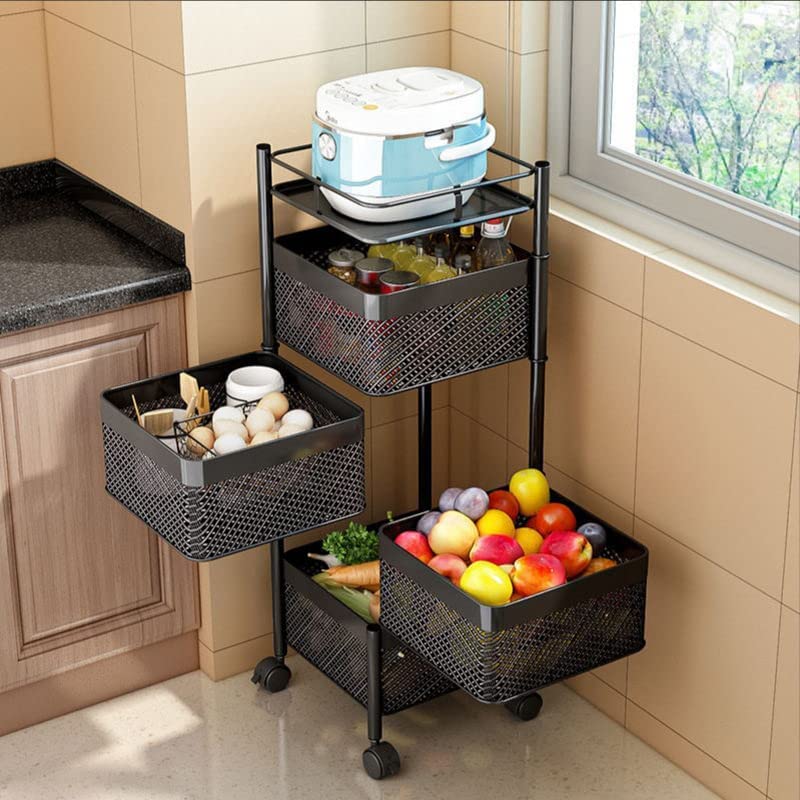
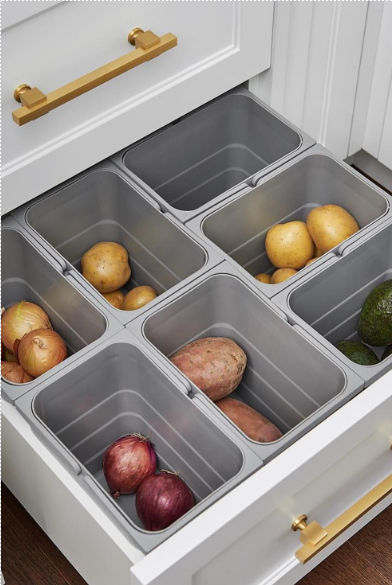
3. Peg Boards and Magnetic Knife Holders
Limited storage space can be effectively used by:
- Peg Boards: Install them on walls to hang utensils, pots, and pans.
- Magnetic Knife Holders: These free up drawer space and keep knives within easy reach and out of the way.
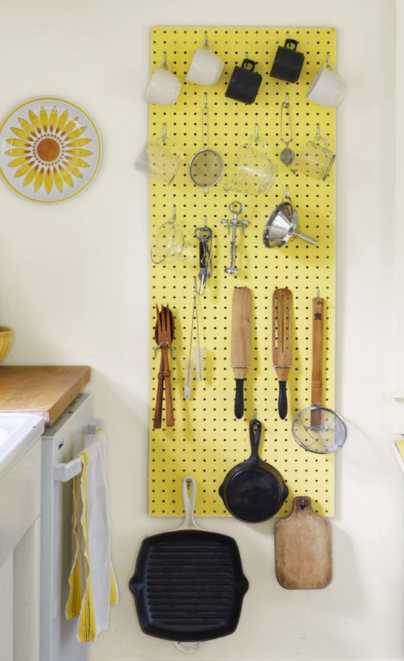
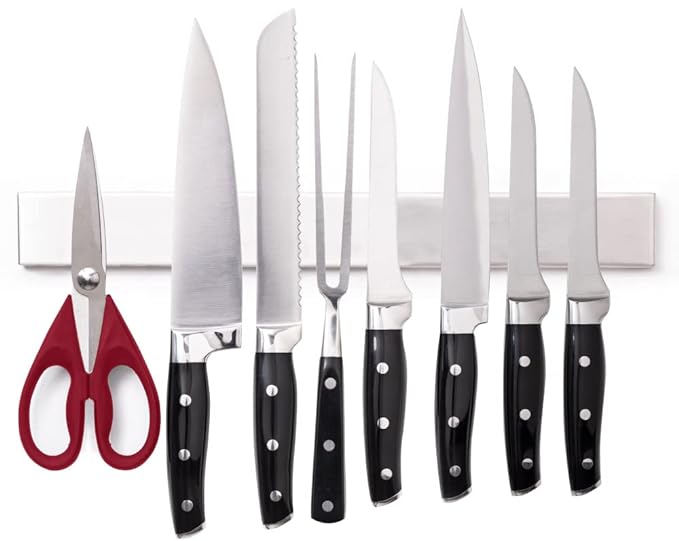
4. Door Hanging Racks and Under-shelf Racks
These racks are flexible options for extra storage:
- Door Hanging Racks: Ideal for storing spices, condiments, and small items on the inside of cabinet doors.
- Under-shelf Racks: Utilize the unused space below shelves to store mugs, kitchen towels, or other light items.


5. Movable Kitchen Island
A movable kitchen island serves multiple purposes:
- Extra Counter Space: It provides additional surface area for meal prep.
- Portability: It can be moved to where it’s needed or stored away to free up space.
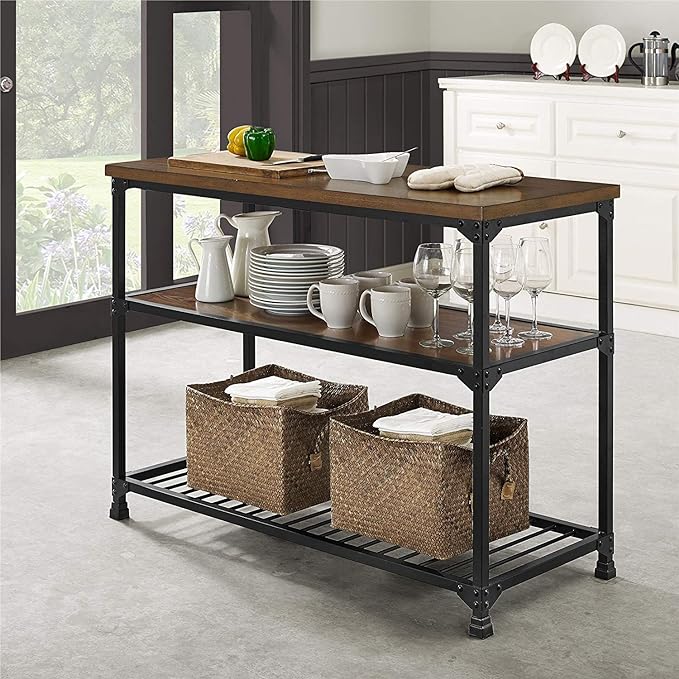
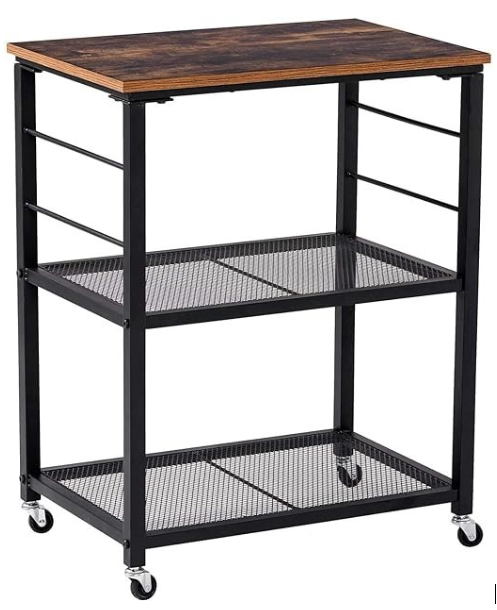
6. Measuring Cups Storage
Save drawer space by:
- Hanging Measuring Cups: Use adhesive strips to hang them inside cabinet doors for quick access.
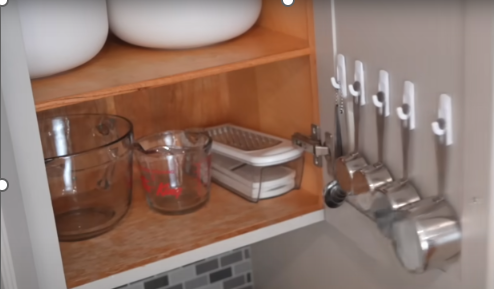
7. Lazy Susan (Turn Table)
Ideal for corner cabinets and narrow spaces, a lazy Susan:
- Rotates: Providing easy access to items without having to reach far into the cabinet.
- Organizes: Keeps similar items together in one spot that turns.

8. Hanging Pots and Pans
Hanging pots and pans help by:
- Frees Up Cabinet Space: Pots and pans take up a lot of cabinet space which can be used for other items.
- Adds Decorative Elements: Well-organized hanging pots can add to the kitchen’s aesthetic.
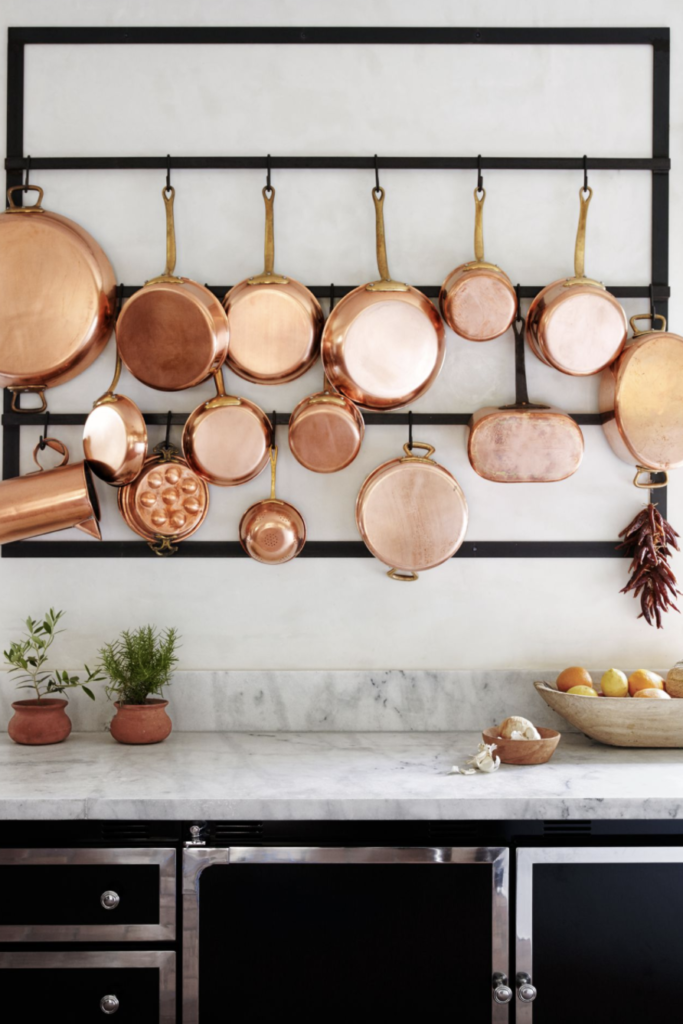
9. Wall Shelves
Wall shelves can be a stylish addition and practical for:
- Everyday Items: Store frequently used items like spices and cooking essentials.
- Awkward Wall Spaces: Utilize unconventional areas for additional storage.


10. Utilize Space Outside the Kitchen
Consider storing seldom-used kitchen items in other areas to:
- Reduce Clutter: Keeping less frequently used items outside the kitchen can make it look tidier.
- Optimize Space: Use curio cabinet, closets, storage rooms, or pantries elsewhere in your home.

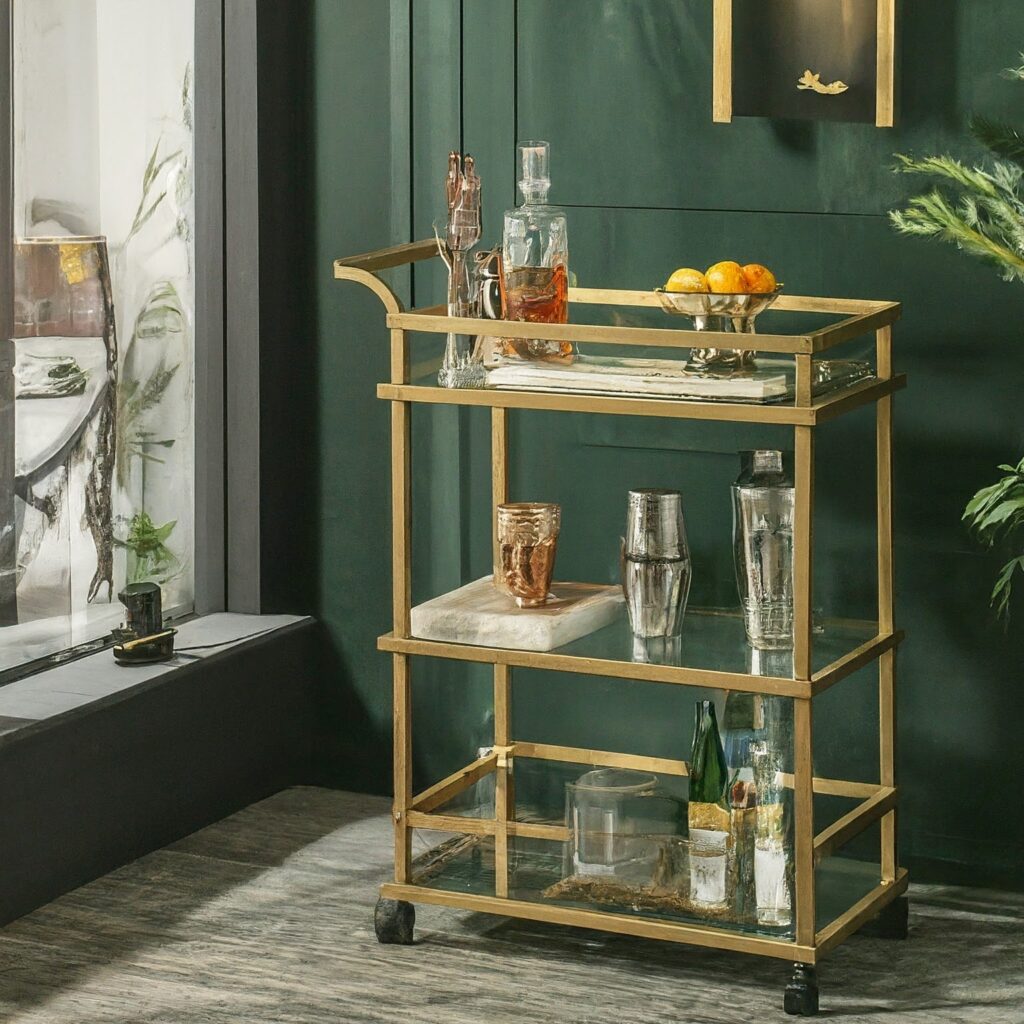
11. Dish Rack Inside the Sink
An in-sink dish rack like the Blanco Bungalow :
- Conserves Counter Space: By fitting within the sink, it doesn’t take up additional space.
- Maintains Cleanliness: Water drips directly into the sink, keeping counters dry.
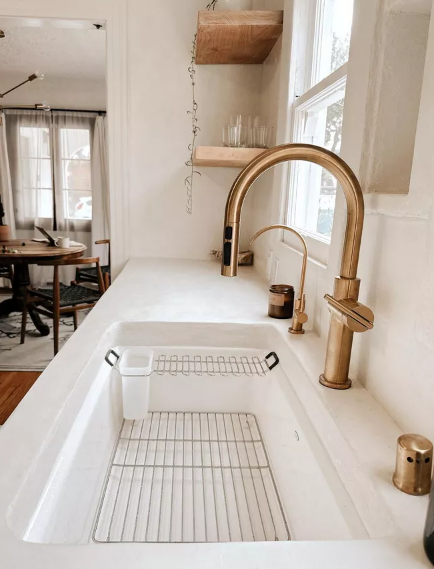
12. Cabinet Dividers
Cabinet dividers are a cost-effective way to organize cabinets:
- Customization: They can be adjusted to fit various sizes of kitchenware.
- Visibility: Enables you to see everything in the cabinet at a glance.
- Order: Keep different categories of items separated, making them easier to find.
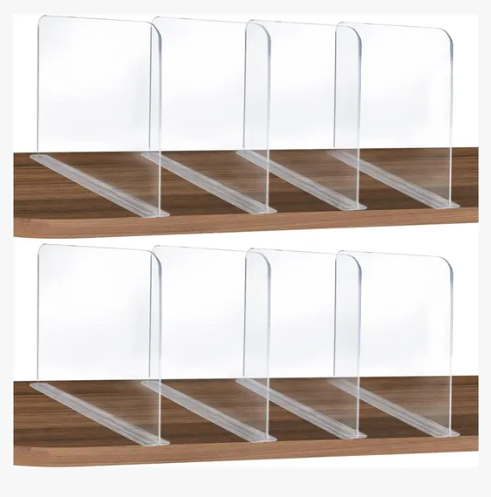
By implementing these organization strategies, you can significantly improve the efficiency and appearance of your kitchen.
Conclusion
In conclusion, organizing a small kitchen effectively is not just possible, it’s a pathway to creating a space that’s both functional and inviting. By leveraging smart storage solutions like shelf organizers, magnetic knife holders, and movable islands, you can unlock the full potential of your kitchen, no matter its size. Emphasizing the importance of adaptability, it’s crucial to periodically reassess and tweak your organizational setup to suit your evolving needs. With a dash of creativity and a commitment to efficiency, your small kitchen can transform into a hub of culinary creativity and joy. Here’s to making the most of every inch in your kitchen and turning compact spaces into areas of endless possibilities!

